Some like it hot! Some garden veggies that is!
Hot crops like tomatoes, peppers and eggplants need a long warm season to produce and ripen their fruit. A lot of larger tomato varieties need an average of 80+ days to start producing harvest-ready fruit. Sweet peppers (like bell peppers) are about the same but hot peppers can easily take 100+ days to reach harvest-ready maturity! Eggplants can also take 100+ days!
Yikes! That’s not good news for us northern short-season growers!
So what’s a girl to do when she’s growing these heat loving plants in the chilly Pacific Northwest?
She gives ‘em a blanket!
Since moving to Western Washington after years of gardening in the high desert heat of Southwest Idaho, I’ve learned that some of my old tricks simply don’t work here! While we had a short growing season in Idaho, we also had hot, hot summers! Temps in the 90’s and 100’s are common throughout June, July and August. So my hot crops grew incredibly well as long as I started them indoors early enough and transplanted them out by June.
However, gardening in Western Washington is a bit different! The Pacific Northwest has a fairly short summer season (similar to what we had in Idaho). However, the temps here stay fairly consistent and lack the heat spikes that I was accustomed to. In fact, spring and early summer (clear up through July!) can actually be a bit on the chilly side! Now, I’m a-okay with passing on those sweaty deliriously hot summer seasons! However, my peppers and tomatoes definitely took a hit last year without the heat!
This year, I’m trying something new for my heat-loving veggie friends: tomato cage hot houses!
What’s the Purpose of a Tomato Cage Hot House?
A tomato cage hot house is a quick and easy way provide an extra layer of insulation for your tomatoes, peppers and other heat loving crops! These hot houses are perfect for cooler grower zones and help warm plants during cooler spring or fall weather.
Tomatoes and peppers ideally like daytime temps in the 70’s to 80’s (Fahrenheit) with overnight temps above 50oF (ideally in the 60’s or higher). Cooler temps can slow the growth and maturity of your plants. And, if you live in an area with a short growing season, those extended cooler temps could mean a significant reduction in harvest!
These tomato cage hot houses help create greenhouse-like conditions that are warmer for the plants, allowing them to thrive and mimic their more natural heat-loving environment. The greenhouse plastic also helps shelter plants from cool air gusts and breezy conditions. However, there is still plenty of airflow (since the top is uncovered) to reduce the risk of fungal diseases and allow pollinators to visit blooms.
When and How to Use a Tomato Cage Hot House
These hot houses are designed to be temporary. They are most ideal to use when temps are regularly below the ideal range for your plants. In most regions, this would be during spring, possibly early summer and fall. Once summertime temps begin warming up, remove the plastic to avoid burning or drying out your plants too much.
Any crop that needs a warm, long growing season can benefit from these temporary hot houses. Peppers (especially hot peppers), tomatoes, eggplants, and okra are all great candidates for these hot houses!
These tomato cage hot houses can act as a type of season extender, allowing you to plant out sooner and harvest longer. However, they won’t protect your plants from frost since the top is uncovered. But, you can easily add an additional piece of greenhouse plastic to the top of the cages to protect your plants from overnight frost. Just be sure to remove that top piece of plastic in the morning once frost danger has passed. Otherwise, it could heat up your veggies too much and restrict too much airflow.
My Results… So Far!
I am using these temporary hot houses on all of my tomatoes which already had tomato cages around them. Once the weather finally warms up (probably mid-July), I will remove the plastic from the cages. I also used smaller tomato cages and made little hot houses for all of my pepper plants!
On watering days, I roll up the bottom of the plastic so that I can easily access the the plants and water them. It’s really easy to move or remove the plastic from the cages since it’s just clipped with clothespins. If we experiencing some warm days (close to 80F – although it’s rare!) I pull the plastic up a bit to allow more airflow at the base of the plants, like you see in some of these pictures. On cooler days, I pull it down so it’s resting just above the soil line.
I added the greenhouse plastic a few weeks ago and I really do think that the growth rate on my plants has increased significantly since then (it was moving sooo slowly before!). So far, they’ve been showing faster growth than last year too! I’ve been checking them regularly for signs of fungal issues and sunburn but they all look happy and healthy!
I can’t say exactly how much warmer the hot houses keep things, but I can certainly feel a temperature difference when I place my hand down into the cage! Since this is my first year experimenting with this method, I’ll post some updates throughout the year. But, for now, I am happy with the results I’m seeing!
How to Make a Tomato Cage Hot House
Check out the full instructions below to make your own tomato cage hot house to keep your veggies extra warm during cool spring and fall days! They are so simple and easy to make! All you need is a roll of greenhouse plastic, some tomato cages and some clothespins!
[mv_create key=”5″ thumbnail=”https://staging7.rootedrevival.com/wp-content/uploads/2021/06/tomato-cage-hot-house2.png” title=”How to Make a Tomato Cage Hot House” type=”diy”]
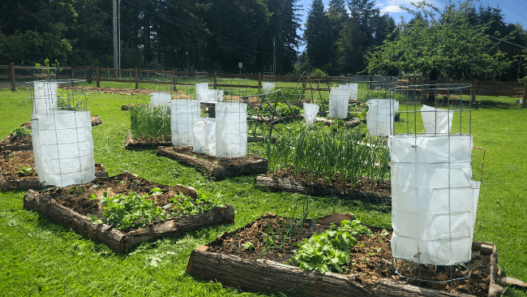
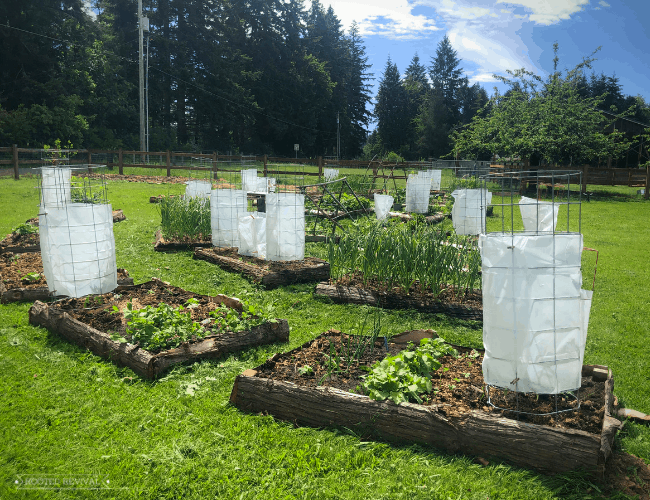









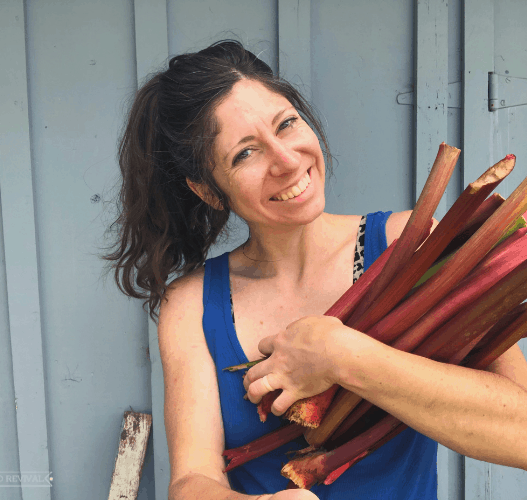



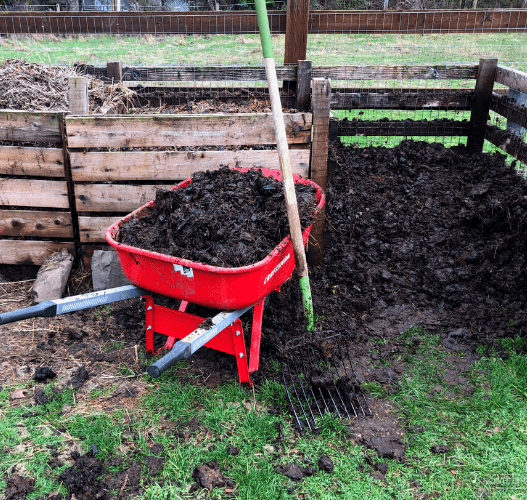

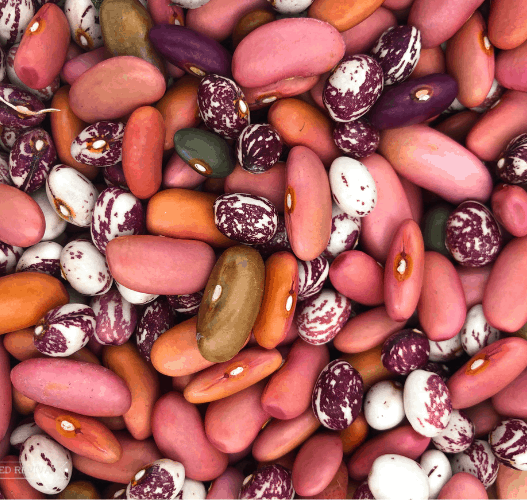
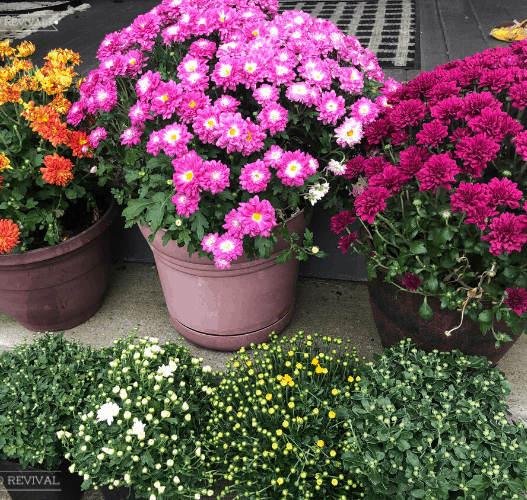
hi thanks for the instructions:) I am wondering how these tomato hot houses are working for you since you started using them (I can’t find a date for this post so I am not sure when you started). I am especially interested because we have gray skies for most of May and June and I would like to maximize the amount of light tomatoes get in a day. In your experience, is there a specific type of plastic or greenhouse film that will focus light energy on the tomato plants? It’s not cold here (coastal san diego) but May Gray and June Gloom slow down garden growth quite dramatically! Thank you!
Oh I feel you with the gloom! We are about an hour south of Seattle so we also get very gloomy days in May and June! Last year was my first year using the little greenhouses and I really do feel like it helped somewhat with the light, but obviously, there’s still only so much light available. From the limited research I’ve done, I believe that greenhouse plastics can help to diffuses the light. This is an interesting article that dives deeper into the topic based on research results in different regions. Here’s a quote from the article regarding tomatoes: “However, they suggest using clear films throughout the year — with the application of shading in hotter periods — as, surprisingly, during the winter better results can be achieved due to greater solar radiation.” Definitely give it a read and if you decide to try it out this year, I’d love to hear what you think!
@Rooted Revival, thank you! the article you recommend is very useful. the discussion of sunlight in both hot summer conditions and in cooler winter conditions clarified a lot. I’m not sure what we will settle on re:tomatoes–we always have multiple experiments going on, just for fun (we don’t especially try to be systematic, just have fun). One experiment is growing a few in straw bales so that the heat from the bale helps them stay warm during spring. Possibly this will be detrimental come summer; but, we can always turn our focus to the in-ground tomatoes and abandon the straw bale tomatoes. Thank you for providing me/us with the information:)